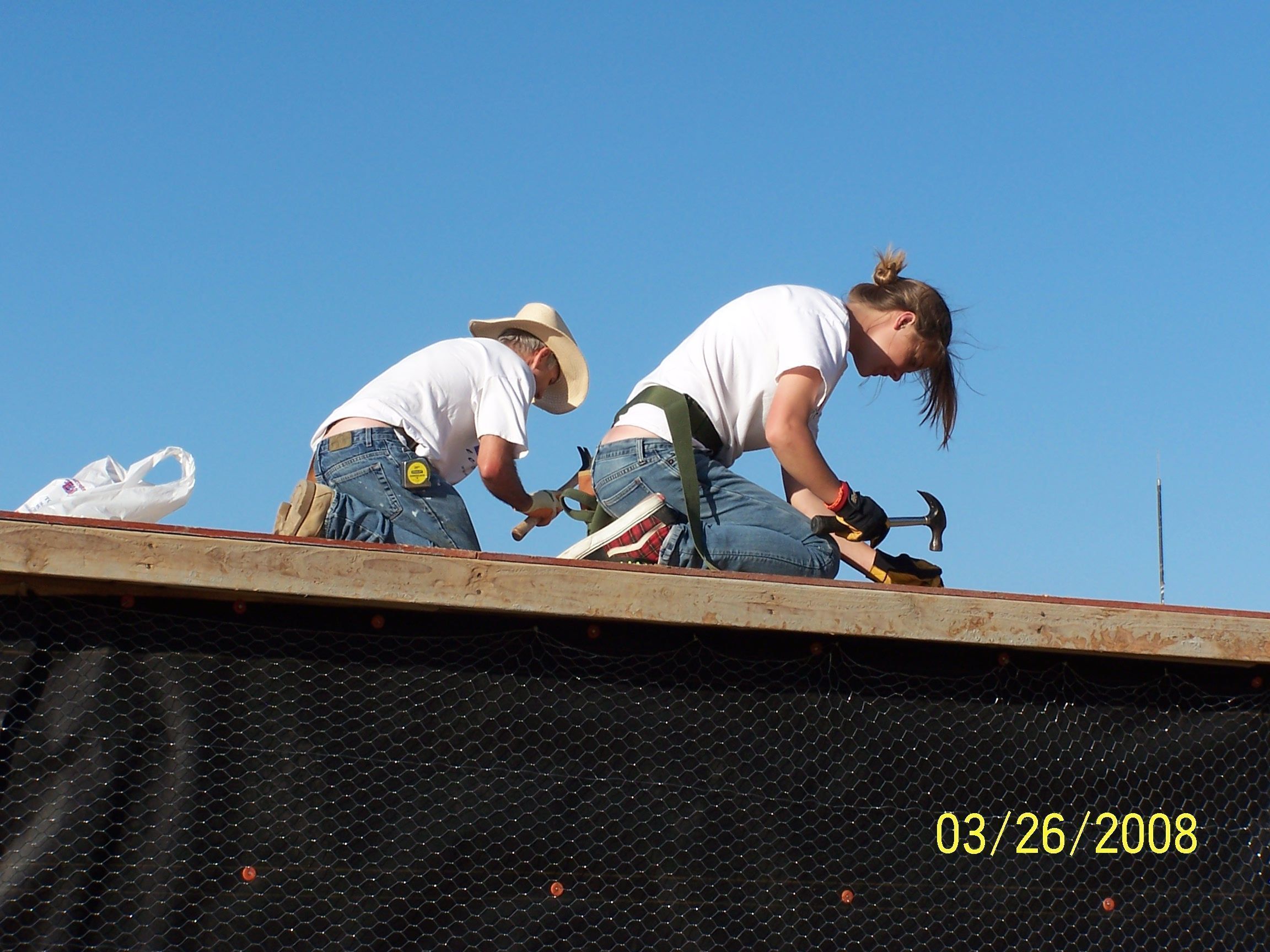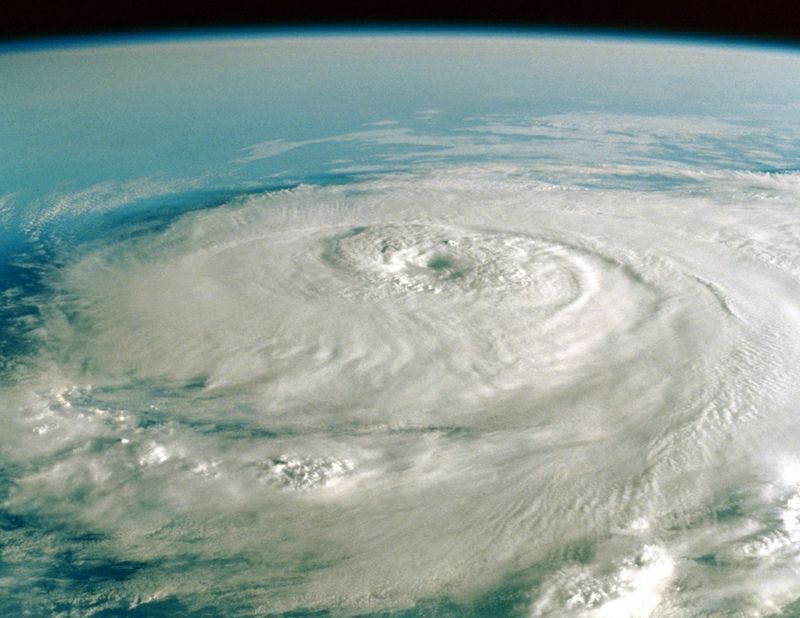Agitated by the constant hurricane updates on the Weather Channel and other media? Need to answer your kid's questions about hurricanes? Here's some basic scientific information about the scary storms that come with familiar names, and how to weather them.
Typically over 300-miles wide and possessing winds that extend for hundreds of miles more, hurricanes are among the most powerful and destructive of all meteorological phenomena. In the past century they were responsible for over 15,000 deaths in the United States alone. Even today, despite the aid of highly advanced tracking systems and warning procedures, a minimum of 25 to 50 Americans are killed yearly by floods, winds, and destruction caused by hurricanes.
Often times, those who choose to ignore storm warnings become victims of Mother Nature's fury.
1. What is a hurricane, anyway?
Hurricanes are essentially a tropical low-pressure system known as a tropical cyclcone, consisting of organized clouds and strong thunderstorms that circulate (counterclockwise in the Northern Hemisphere, clockwise in the Southern) around a central area. Hurricanes are classified as such when they produce wind speeds of over 74 mph. Storms with wind speeds between 39 and 73 mph are classified as tropical storms, and organized systems with winds below 39 mph are classified as tropical depressions.
According to the National Oceanic and Atmospheric Administration, scientists actually use much more specific terms to identify the geographic location of such tropical cyclones. The names used are:
- "hurricane" (if it occurs in the North Atlantic Ocean, the Northeast Pacific Ocean east of the dateline, or the South Pacific Ocean east of 160E)
- "typhoon" (the Northwest Pacific Ocean west of the dateline)
- "severe tropical cyclone" (the Southwest Pacific Ocean west of 160E or Southeast Indian Ocean east of 90E)
- "severe cyclonic storm" (the North Indian Ocean)
- "tropical cyclone" (the Southwest Indian Ocean)
2. How do hurricanes happen?
Tropical depressions (which sometimes build into hurricanes) form when a pre-existing weather system such as a simple thunderstorm picks up heat and energy through contact with warm ocean waters. Winds which carry moisture from the ocean's surface spiral up — and this spiraling motion is key — into the storm's low-pressure center. When that moisture condenses into drops, more energy is created, and the storm begins to grow larger and move higher into the atmosphere.
Countries close to the equator attract the fewest hurricanes because of the "Coriolis force" — a principle of physics whereby moving objects are deflected relative to a rotating reference frame. Because the earth's equator is right in the middle of the spinning globe, the force is zero here and even the presence of warm air and moisture isn't enough to create hurricane or typhoon conditions.
Eventually, the eye of the storm will form around rapidly sinking air that dries and warms the area around it. A hurricane can "live" for over two weeks, and in that time travel thousands of miles. It may lose strength and die when high-speed upper-atmospheric winds tear the system apart, or as is often the case, when landfall robs the storm of its all-important moisture source.
3. Have hurricanes always been around?
The deadliest storm in recent history occurred in October 1780, when an estimated 20,000 lost their lives in the Caribbean over the course of six days. In 1900, a hurricane struck Galveston, Texas and killed over 8,000 people. Over the course of the last century, deaths throughout the world have declined, as construction techniques have been steadily improved. However, with modernization, monetary damage from storms has skyrocketed. Hurricane Katrina, which struck America's southern coast in 2005, is said to have caused $81 billion in damage with more than 1,800 lost lives.
4. Do we know when a hurricane is coming?
For over 50 years, scientists from all over the world have been watching, flying through, and studying hurricanes. As technology has progressed, techniques for predicting and tracking the storms have improved. Yet the secrets behind formation and movement of hurricanes have still not completely revealed themselves, and forecasts that attempt to predict their paths beyond a day or two are educated guesses at best.
5. Why are hurricanes named?
Hurricanes have been given names for hundreds of years. In the West Indies, it was once tradition to name a storm after the particular saint's day on which it occurred. During World War II, it became common practice to name hurricanes after females. In 1978, the World Meteorological Association approved a plan to use both male and female names, all of an international flavor, which would be chosen a number of years in advance. Once a system with counter-clockwise circulation and wind speeds of 39 mph is identified, the Tropical Prediction Center near Miami, Florida assigns a name from the predetermined list.
The letters Q, U, X, Y and Z are not used, due to the scarcity of names beginning with those respective letters. Storms that cause significant death and/or destruction have their names officially "retired" from the pool of future names.
For any year, you can check the National Oceanic and Atmospheric Administration website and see if your name will be on the list!
6. What can I do if a hurricane is coming?
The best thing to do when you first hear that a hurricane may be in your region is to stay informed, and keep an eye on the path of the storm as it approaches. Hurricane Irene, one of the first major hurricanes of the 2011 travel season, grew in strength moving north in the Atlantic, causing damage in the Bahamas but didn't really hit till it got to New York. The precautions issued to residents of US coastal cities are worth remembering for all storm watchers:
- If evacuation plans are put into place in your community, follow them.
- Vacationers should follow their hotel instructions carefully, remembering to take cover-all clothing and closed shoes if evacuating to a hotel facility outside your guest room.
- If staying at home throughout the storm, plan to stock one gallon of bottled water per day per family member.
- Get a car battery-powered cellphone charger so that you can stay in touch even if power outages occur.
- Stock enough canned food to last 3 days.
- Have a battery powered radio available.
- Know where the nearest shelter is located, often in your neighborhood school.
- To safeguard your home, seal all doors and windows with shutters and tie down outdoor furniture against the wind.
- Make sure you have a First Aid Kit on hand with enough ibuprofen, tweezers, alcohol wipes, antiseptic hand cleaner, medical adhesive tape and gauze, bandaids, insect bite swabs, antibiotic ointment, hydrogen peroxide, scissors, instant cold packs, and exam gloves to take care of minor injuries and cuts that may occur.
And unless you're a surfer, stay away from these fierce storms. Hurricanes are serious buisness.
Dear Reader: This page may contain affiliate links which may earn a commission if you click through and make a purchase. Our independent journalism is not influenced by any advertiser or commercial initiative unless it is clearly marked as sponsored content. As travel products change, please be sure to reconfirm all details and stay up to date with current events to ensure a safe and successful trip.




Hurricanes strike without intimation, we need to take some preventive measures to reduce the impact of hurricanes. The information given here is really useful. I would like to add some of the tips that help to survive a hurricane like, create a plan for the family, secure your home with hurricane resistant products, always have a survival kit with you. Take some helpful hints from the professionals and secure your home and make sure you have an escape route ready with you.